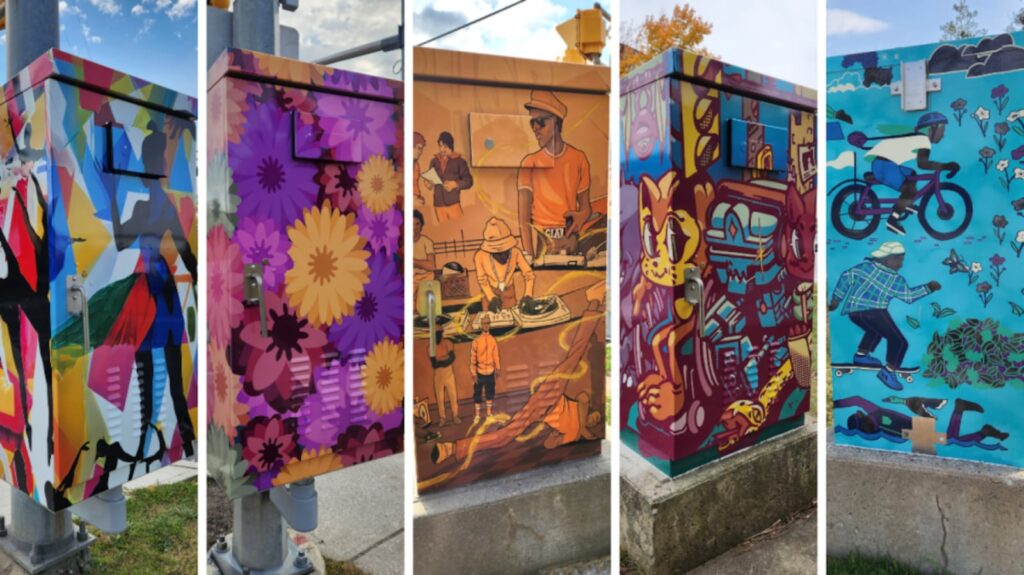
The City of Barrie is trying something different to deal with graffiti, and it seems to be working. Instead of constantly painting over tags and hoping they do not come back, the city decided to bring in local artists to turn vandalized spaces into permanent artwork. One of those artists is Ali Jammal, better known as Eyjay Inc.
Jammal was one of several creators asked to take part in Barrie’s graffiti abatement project, an initiative launched to help reduce repeated tagging on public infrastructure. He was assigned a traffic signal box that had been hit with graffiti multiple times over the past year. Today, it looks nothing like it used to.
The box is now covered in a vibrant, abstract design that pulls in passersby. It is not loud or flashy, but it stands out. The colors are layered in a way that feels fluid, and the shapes seem to move depending on where you are standing. It is the kind of thing that makes you pause, even for just a few seconds.
“There is something about putting art into everyday spaces,” said Jammal. “People walk by these things all the time and never really look. But when you give it some life, it becomes part of the environment. People notice.”
The graffiti abatement program is part of a broader strategy the city is testing. Instead of treating graffiti purely as a policing issue, Barrie is leaning into a preventative approach. The idea is simple. When you make public spaces feel intentional and cared for, they are less likely to be vandalized. It is a method backed by research and already being used in cities across North America.
According to city staff, the results so far have been promising. The wrapped boxes have not been retagged, and residents have responded positively. People are noticing the change and, in many cases, appreciating it. Some take photos, some stop to ask questions, and others just enjoy seeing something different on their usual route.
For Eyjay Inc, the project was not just about showcasing his work. It was about engaging directly with the community. Jammal has exhibited in major cities like Toronto, Los Angeles, and New York, but says working on public art in his home province felt different.
“There is no barrier here,” he said. “In a gallery, people choose to walk in. On the street, you do not get to decide who sees it. That is the point. It is for everyone.”
Known for his abstract paintings, Jammal often works with resin and acrylics, creating pieces that reflect movement and emotion. His style is layered but accessible. It invites people in without telling them exactly what to see. That mindset carried into his work on the Barrie traffic box, which remains open to interpretation.
The city says more wraps are planned for 2025, and there is growing interest in expanding the program to other forms of infrastructure, possibly benches, crosswalks, or even entire walls. It is a relatively low cost way to support local artists while improving the city visually and socially.
What started as a response to vandalism has quietly turned into something more meaningful. For residents, it is a reminder that creativity can be practical. And for artists like Eyjay Inc, it is proof that art does not always need a gallery to make a statement.







